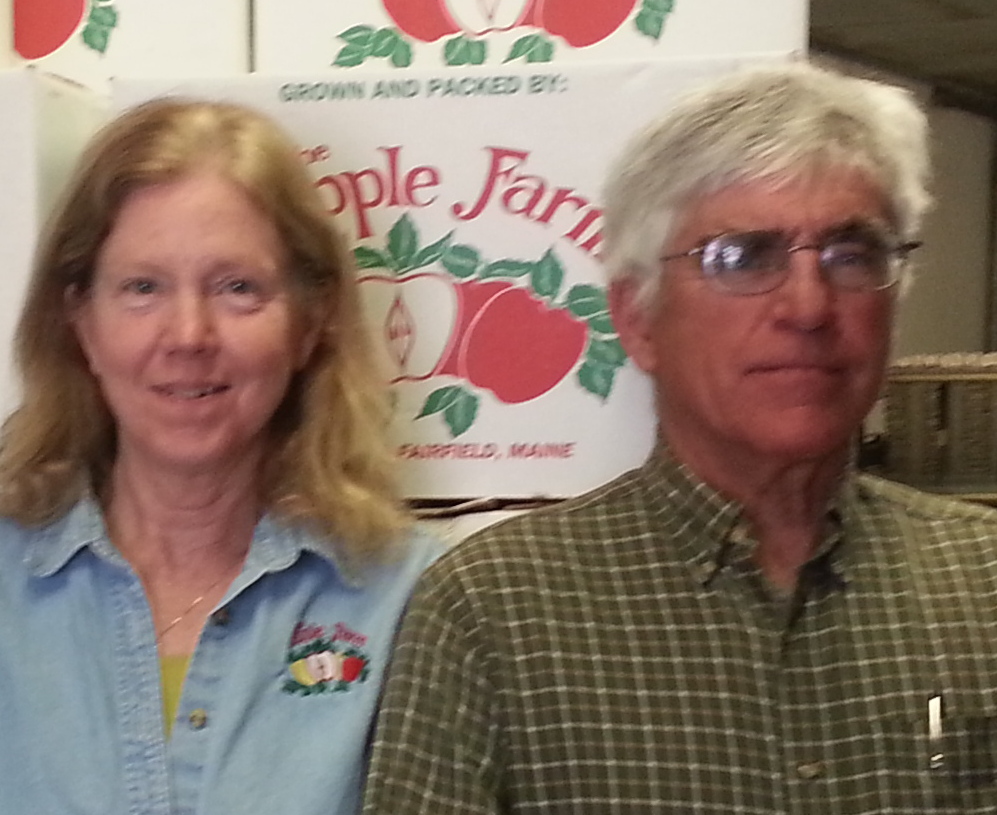Farming is an art, but also a science.
Forty years ago my husband Steven and I bought an orchard in central Maine. Growing healthful and wholesome food for our neighbors and for ourselves has been a wonderful, gratifying experience. We have extensive gardens and a farm market. Our intention all those years ago was to grow apples as organically as possible, and we believed it was possible. At the time, though, we had little concept of what that meant. Like most people, we were not from farm families (only 1½ percent of Americans are farmers), and our only concept of organic was “no pesticides.” That said, we did have a vague understanding of a fairly new system called IPM, Integrated Pest Management.
Since that time, we have come to embrace IPM, using it in both our certified organic and in our “conventional” orchards. IPM is used extensively in the apple industry in Maine. It is a knowledge-based practice, a kind of a know-your-enemy policy. We have learned the life cycles of insects and diseases that could be problems and also those that could be beneficial to our crops. For example, each year we put up round red sticky balls, which are designed to look like apples and catch apple maggot flies. We know by the number of flies per trap if we have reached a dangerous threshold, at which point we also know that we have to deal with the problem. We do this around July 4th because we are aware of the life cycle of the apple maggot fly, and – since no one wants a worm in her apple – we need to know when the flies arrive in the orchard. We monitor other pests, like plum curculio and apple scab, using techniques often developed in conjunction with University Cooperative Extension services.
‘THINK FIRST, SPRAY LAST’
Our understanding of bugs and diseases allows us to assess when the threat to our apples is real versus when a pest will cause just a small amount of damage that we are willing to tolerate – hey, that’s what cider is for! Because of IPM, we know when, and if, to go further, to intervene, either with an organic material (yes, there are certified organic pesticides and fungicides) or with a manmade spray. “Think First, Spray Last” is what we say – and do.
Like all farmers, we strive to maintain our soil, to protect our crops and to grow the best food we can. With these always in mind, we have tried a lot of interesting strategies. Some have worked, some not so much! Farmers are always experimenting. Spraying powdered milk on our trees had limited success, while hanging hair-and-blood meal bags on the trees to deter deer was a bust.
Our education is never-ending and is often aided by folks from the Cooperative Extension. Farmers in Maine who sell more than $1,000 of food to the public and who use any crop protection products, organic or not, must be licensed and trained in the safe use of these products; to maintain the license, the training must be ongoing.
TRUTH VERSUS PERCEPTION
“Organic” versus “conventional” is not really the question for us anymore. The two growing methods have come closer together in practice, although the public perception of that seems to be just the opposite. Only 2 percent of farms in the U.S. are certified organic. There is a reason for this, and it is not that non-certified farmers are lazy or stupid. It is the reality of what we as farmers in the U.S. are up against: feeding more than 350 million people three meals a day, 365 days a year, year after year. In Maine alone there are more than 1.3 million people to feed each and every day. We understand that growing food is the ultimate responsibility of farmers. Maintaining our productive soil is fundamental to that goal. Sustainability is only possible if all parts of a farming operation come together. That means healthy crops, good markets, committed workers and enough profit to keep the farm viable. And hopefully no hail, the apple growers’ H-word!
My husband and I will continue to grow our 12-acre certified organic block of trees even though it has not proven to be financially viable; we subsidize it with the rest of our farm. We do this to continue the experiment and to try to find methods that will work and can be incorporated into the rest of the orchard. Apples are difficult to produce organically in Maine. The humid environment encourages fungus and pests that are not found in drier parts of the country (although the flip side is that we do not have to worry much about water for the trees). We are no different from the many farmers all over the state, working hard to produce good food on family-run farms and hoping to make a decent living doing something that we love.
Send questions/comments to the editors.



Success. Please wait for the page to reload. If the page does not reload within 5 seconds, please refresh the page.
Enter your email and password to access comments.
Hi, to comment on stories you must . This profile is in addition to your subscription and website login.
Already have a commenting profile? .
Invalid username/password.
Please check your email to confirm and complete your registration.
Only subscribers are eligible to post comments. Please subscribe or login first for digital access. Here’s why.
Use the form below to reset your password. When you've submitted your account email, we will send an email with a reset code.